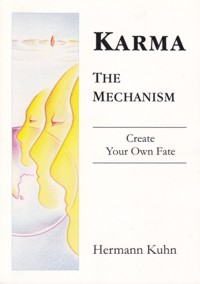
Namapratyayah sarvato yogavishesatsukshmaikakshetravagahasthitah sarvatmapradeshesvanantanantapradeshah (24)
At all times an infinite number of karmic molecules coexists with our body.
When we act, a number of these karmic molecules attaches to our interactive karmic field. The nature and intensity of our activity determines how many karmic molecules will attach. This process cannot be perceived directly by our senses. (24)
How big is a karmic molecule?
The Tattvarthasutra uses the unit pradesha as the point of reference to describe minute dimensions of space. pradesha is usually translated as 'spacepoint' and denotes 'the smallest possible extent of space'[43]. Spacepoints are comparatively large, the particles of other elements (e.g. matter) can be far smaller than one spacepoint.
Karmic molecules are far subtler than spacepoints. One spacepoint can contain an infinite number of them.
The sutra states that our body coexists with as many karmic molecules as 'infinite times infinite'[44] spacepoints can hold.
If - by our inclinations and intentions - we (i.e. our consciousness - jiva) stimulate a limited number[45] of these karmic molecules, they either cause immediate activity or attach to our interactive karmic field in a latent form to manifest activity at a later time. Without this stimulation by intention and activity which connects our consciousness (jiva) to karmic matter (ajiva), karmic molecules have no effect, even if they take up the same space as our body.
Those karmic molecules attached to our interactive karmic field remain only within the limits of the bodies we inhabit during incarnations. Apart from manifesting activity they have no further function. Individual karma is not stored outside our bodily form.[46]
The activation of karmic molecules brings their latent energy into a form we can experience. Activation totally dissolves the bond between our consciousness and the manifested karmic molecules. After they manifested activity, the respective karmic molecules cease to influence our life.
 Hermann Kuhn
Hermann Kuhn
